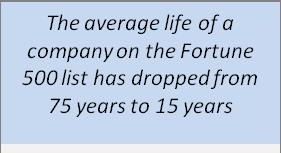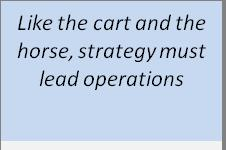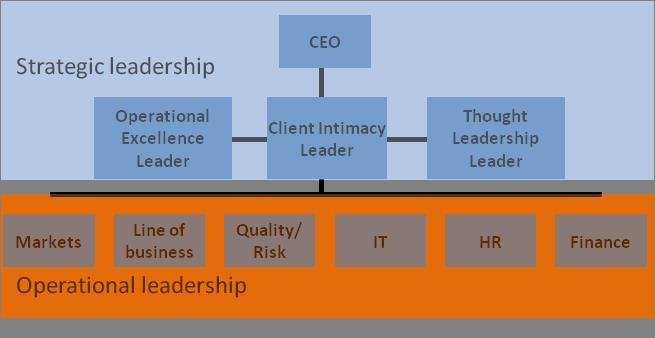 Building a professional Services firm for the 21st century: Why firms need a lifestyle change, not a crash diet. by Keith Dugdale
Building a professional Services firm for the 21st century: Why firms need a lifestyle change, not a crash diet. by Keith Dugdale
Some firms will soar in these economic times, some will get by and some may well disappear. Those who fly will be those who lead their way through the period and don't just manage their way. Firms with leaders who actively embrace the strategic changes that are needed and take the rest of the firm along with them for the ride.
Sadly many will convince themselves, and others, that this current economic climate is a blip, that a short term crash diet will suffice and that there is no need for a more permanent change in lifestyle. The diet is usually the easier decision for leaders, but often the most painful for others and for the long term. As 1960s author Upton Sinclair put it "It is difficult to get a man to understand something, when his salary depends upon his not understanding it."
The diet is usually the easier decision for leaders, but often the most painful for others and for the long term. As 1960s author Upton Sinclair put it "It is difficult to get a man to understand something, when his salary depends upon his not understanding it."
As recently as the 1980s and 1990s, many professional services firms tightened their belts, offloaded staff with low utilisation and in some cases reduced executive income. Largely these approaches worked as economies picked up and the driving forces behind the downturn evaporated. Over the next 10 to 30 years firms made hay whilst the sun shone.
When the Global Financial Crisis (GFC) rolled around the Northern Hemisphere in 2008 many firms believed this was another blip and went on another crash diet. Akin to the myth that one can boil a frog alive by  raising the water temperature gradually, many firms in the US, Europe and Asia felt a gradual increase in discomfort. With the lack of sudden pain few firms took a big leap. Over the following four to five years many saw revenues per hour worked drop by more than 40%.
raising the water temperature gradually, many firms in the US, Europe and Asia felt a gradual increase in discomfort. With the lack of sudden pain few firms took a big leap. Over the following four to five years many saw revenues per hour worked drop by more than 40%.
The Financial Times 2012 report (http://ftcorporate.ft.com/professional-services/) on Effective Client-Adviser Relationships identified many of the issues and what professional services clients are looking for - however few firms have adapted as radically as the report would indicate they need to. "Although clients' businesses have become more agile and innovative, there is frustration that many advisory businesses have not implemented the same degree of change". The report has one particularly damning finding: "While 51% of consultants consider that they offer excellent value for money only 2% of clients agree."
What is needed is strategic change not operational tinkering. However lessons appear not to have been learned from what has happened post GFC and the failings are being repeated. Maybe one of the reasons is the mindset of the people in charge.
Since 2012 the tap has significantly tightened on Australia by China reducing its mineral needs. As this happened many firms believed this was another blip and so squeezed their operations. In the years since things have continued to tighten with some firms now losing up to 40% of staff and a substantial drop in revenue.
Short term cost cutting can be essential, but at some point the firm starts compromising its ability in its core business. This economy is the new reality. Clients are more educated and have more power over providers; and expertise is increasingly commoditised with cheaper advice coming in from overseas.
Before the downturn many firms and their people had become fat, happy and lazy.  Those who will shine going forward are those with the right attitude and aptitude. The firms who will be leaders in their field in 10 to 20 years will be those brave enough to realise that in order to succeed they need to change.
Those who will shine going forward are those with the right attitude and aptitude. The firms who will be leaders in their field in 10 to 20 years will be those brave enough to realise that in order to succeed they need to change.
Of the Fortune 500 companies listed in 1955, 87% are no longer in that list. 50 years ago the average lifespan of a company on the fortune 500 list was 75 years, now it is less than 15 years - mainly because leaders find it hard to change.  As Einstein famously stated, insanity is "doing the same thing over and over and expecting a different result".
As Einstein famously stated, insanity is "doing the same thing over and over and expecting a different result".
Fortunately some firms have felt the heat sufficiently and are reacting to position themselves for the next decade and not just for the next reporting period or next time sheet. In Australia some law firms in particular are making radical changes, however many are doing little more than moving the chairs around the deck of the Titanic.
Firms need to look at structure, rewards, systems and people in the way many firms in the Northern Hemisphere wish they had five years ago. The way this is approached will be largely determined by the leaders who are in place at the time.
Structure and responsibilities of leaders
Many firms are currently 'led' by operations roles and people whose expertise and mind-set is operational. Their skill and enjoyment comes from focussing on efficiency and who are naturally more comfortable considering the past and current situation than they are in looking to the future.
What is needed is a structure with a strategic leadership team above the operational leaders. This is critical if the firm is to achieve its existing or new vision.
Many firms are unfortunately driven by operational decisions made by people with impressive job titles. However a job title does not determine whether someone is a leader; their behaviour does.
Operations should support strategy not drive it. To make this shift a different structure is needed, with potentially significantly different types of people within the top echelons of that structure.
The CEO is responsible for driving the construction of the vision and for motivating the organisation to live and breathe it. They also must determine their personal legacy, which aligns with the vision. They must be inspirational, a visionary and a future thinker. It is more important that the CEO understands the world in which their industry operates than it is that they understand the ins and outs of their own business. They do not need to come from within their own industry. Their role is positioning the firm externally and leading it internally.
The strategic leadership team is responsible for development of the strategy to achieve the vision and for the execution of that strategy. This is the key team to run the organisation as all decisions made must align with the strategy and vision. If circumstances change then the vision and strategy need to change before operational changes are made. There is healthy tension between the three strategies of operations, client and product as discussed below. For example there cannot be blind adherence to client intimacy without consideration of operational excellence.
The operational leadership team should be responsible for making sure that operations support and drive the strategy. For example the head of IT needs to make sure that all technology acquired supports the client centric, operational excellence and thought leadership strategies. The head of HR needs to be responsible for implementing KPIs which drive client centric behaviour, thought leadership and operational excellence.
Core attributes of executives, partners and staff
Traditionally firms have focussed on being the expert. They recruit people with expert university results, they train them to be even deeper experts and reward and promote the best experts. This leads to two potential issues, which generally only become concerns when times are tight.
Unfortunately the skills and mindset of an expert do not necessarily correlate to those of a visionary leader.
One large firm in Asia called in 2008 because "after 20 years of boom times our partners have forgotten how to pick up the phone and call their clients"
Like the cart and the horse, strategy must lead operations
Many legal firms addressed this a decade ago by bringing in a lateral hire CEO or Head of Operations who was not from their industry. That approach is however not common resulting in too many leaders who are experts but neither visionaries nor strategic thinkers.
Research also shows that expertise is no longer enough. To be truly successful the professional services provider needs several core attributes, all linking to the strategy below:
- The ability and drive to build trust with economic buyers - not just provide technical solutions to technical buyers
- The ability to influence clients and all levels of government in their decisions - as opposed to reacting to their needs
- The drive and intellectual capacity to create new ideas, methodologies, services etc. - rather than entrench themselves in a safe, comfortable area
- The commitment to build a firm based on trust - rather than one driven by structure and process
- The discipline to agree goals and then address non-performance - rather than accepting mediocrity
To develop these attributes in their staff, professional services firms need to make several critical changes:
- Redefine core recruitment criteria
- Revisit KPIs for rewards and promotions
- Re-engineer the skills that are trained
- Establish proper technology that measures and predicts performance
- Redesign the organisational structure and people/responsibilities within that structure
Strategic Options
One widely used strategic management model is Treacy & Wiersema who talk about three factors that determine whether an organisation is to be successful.
- Operational excellence
- Product (thought) leadership
- Customer / Client intimacy
Their hypothesis is that to succeed, any organisation should be market leader in one of these three, and on a par with their competition in the other two. Hence the structure suggested below.
In a future article Keith will suggest key aspects of building such a structure and driving a strategy which will succeed in a professional services firm.
*************
Please Share: If you valued this article, please share via your Twitter, LinkedIn, Google+ and Facebook social media platforms. We encourage you to join the conversation or ask questions. So feel free to add a comment on this post below.
Your Invitation: We invite you to subscribe to this blog. Subscription is free and it allows you to get access to all our subscriber only content and our periodic newsletter.